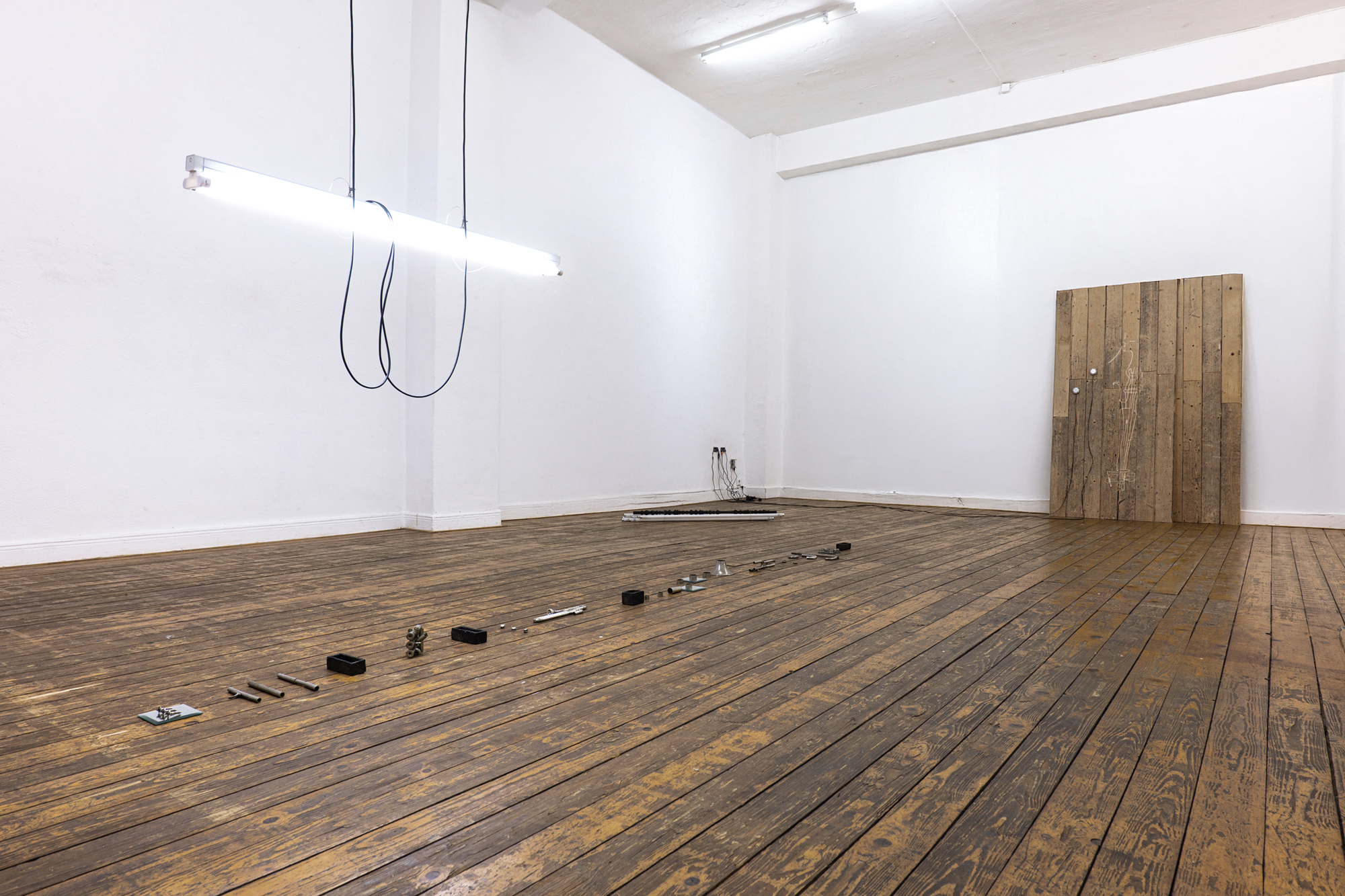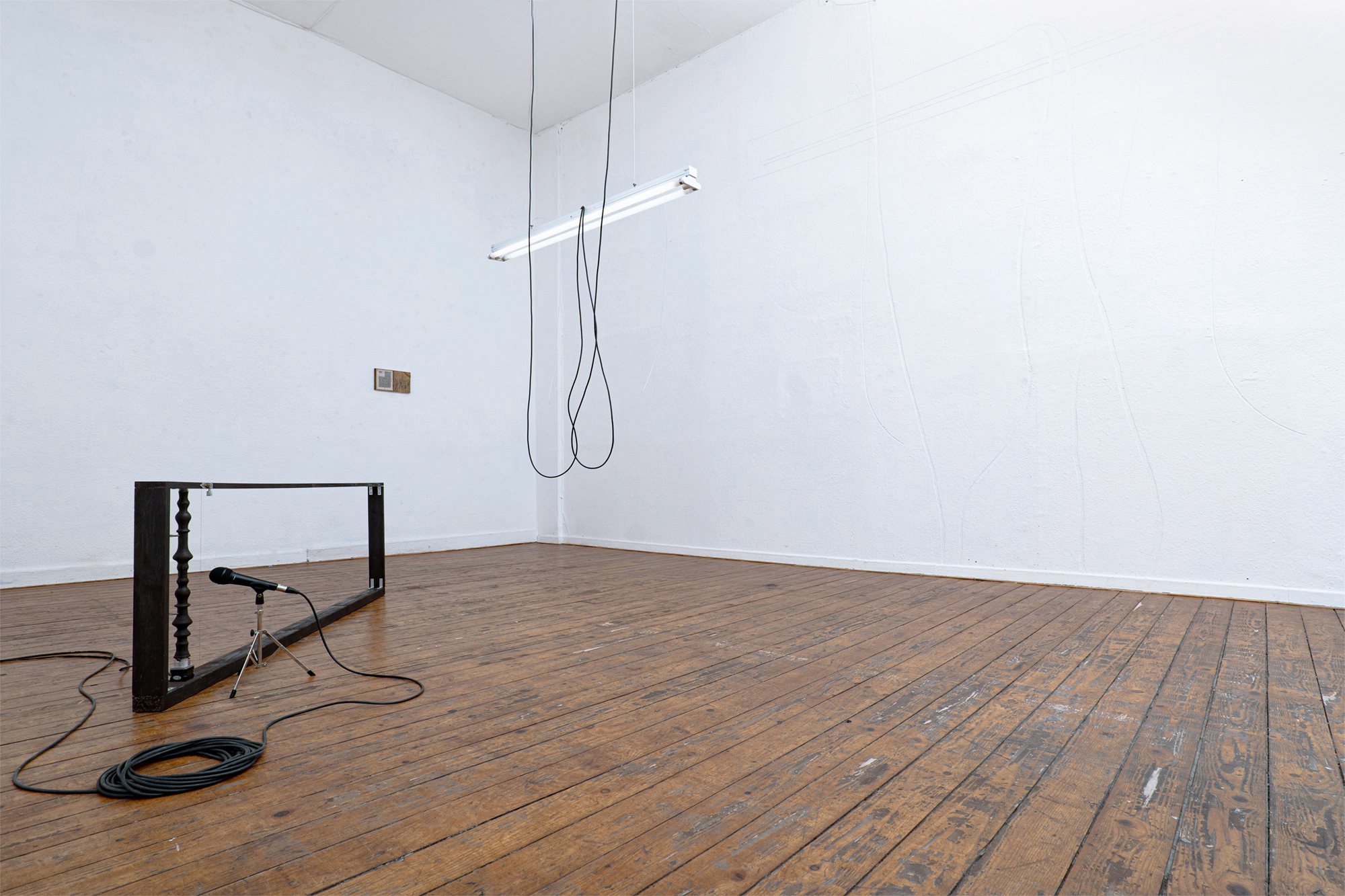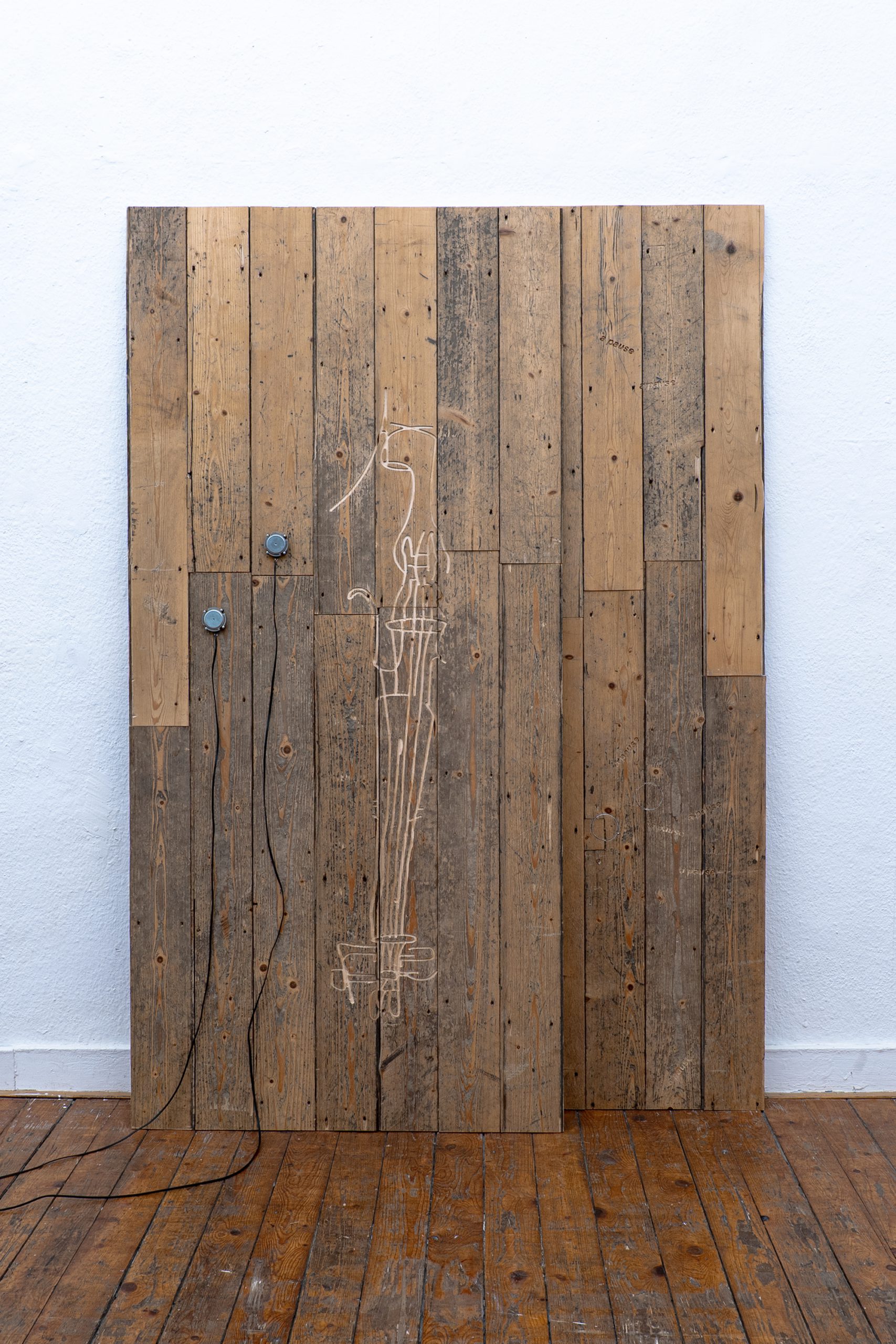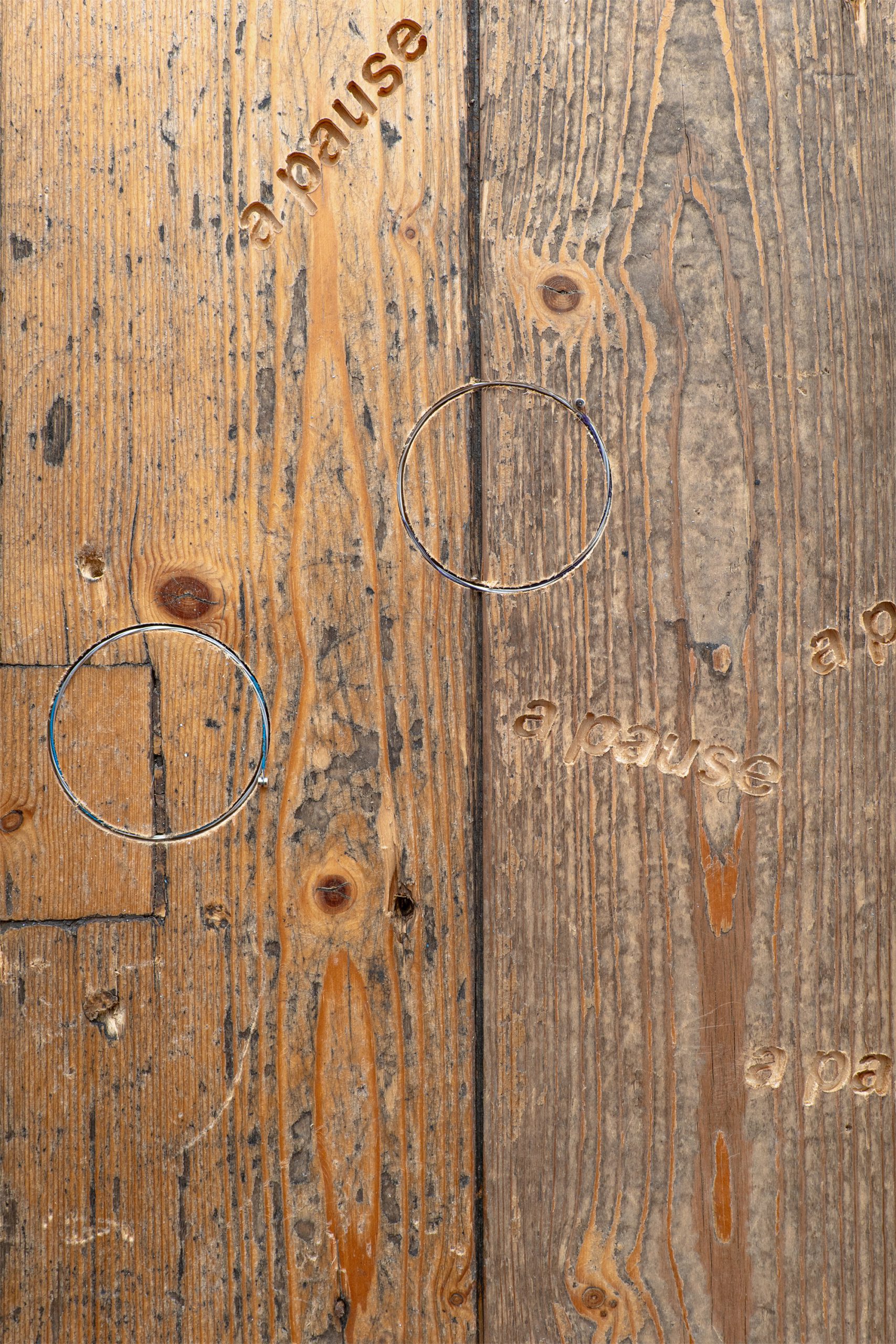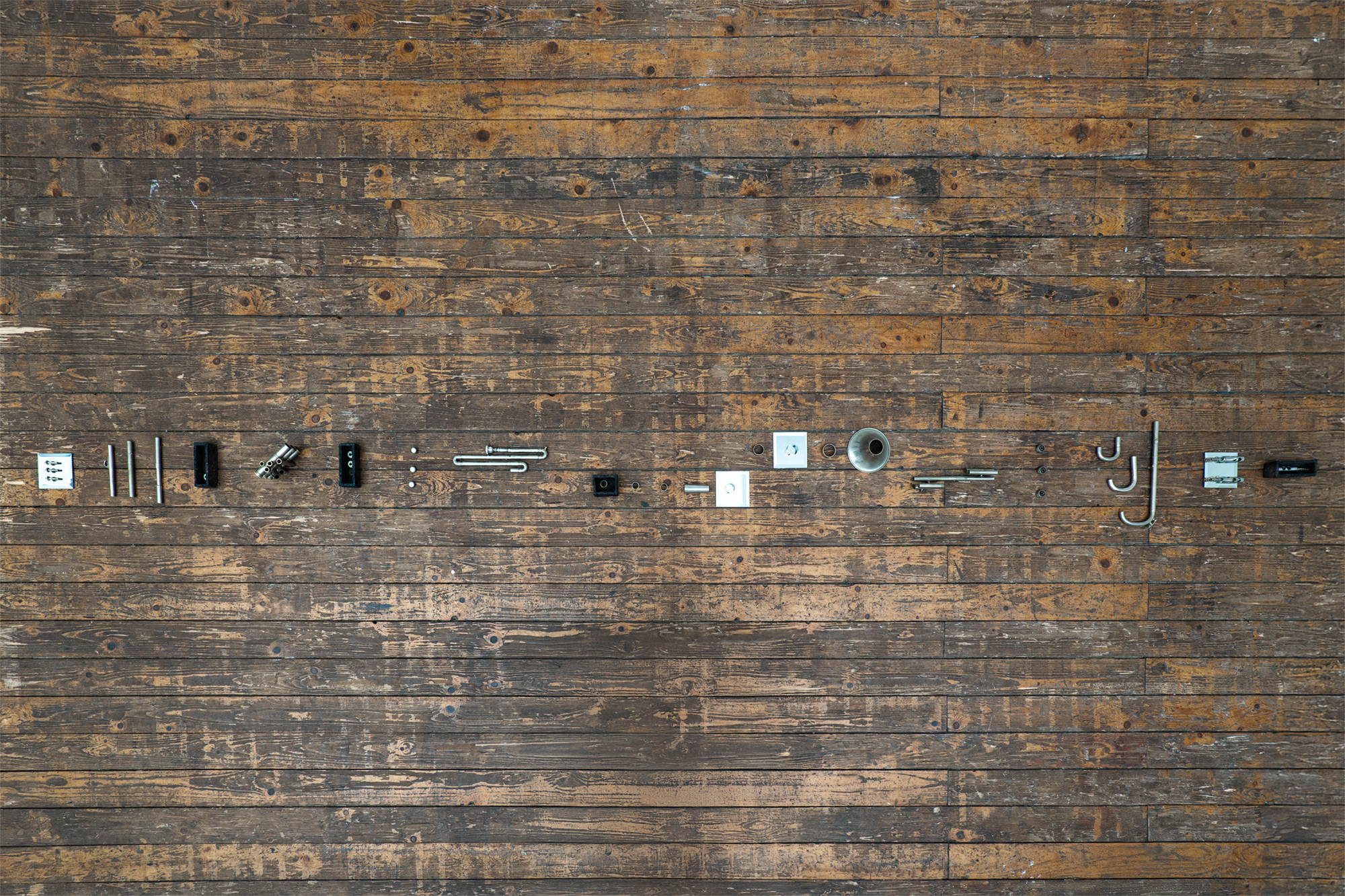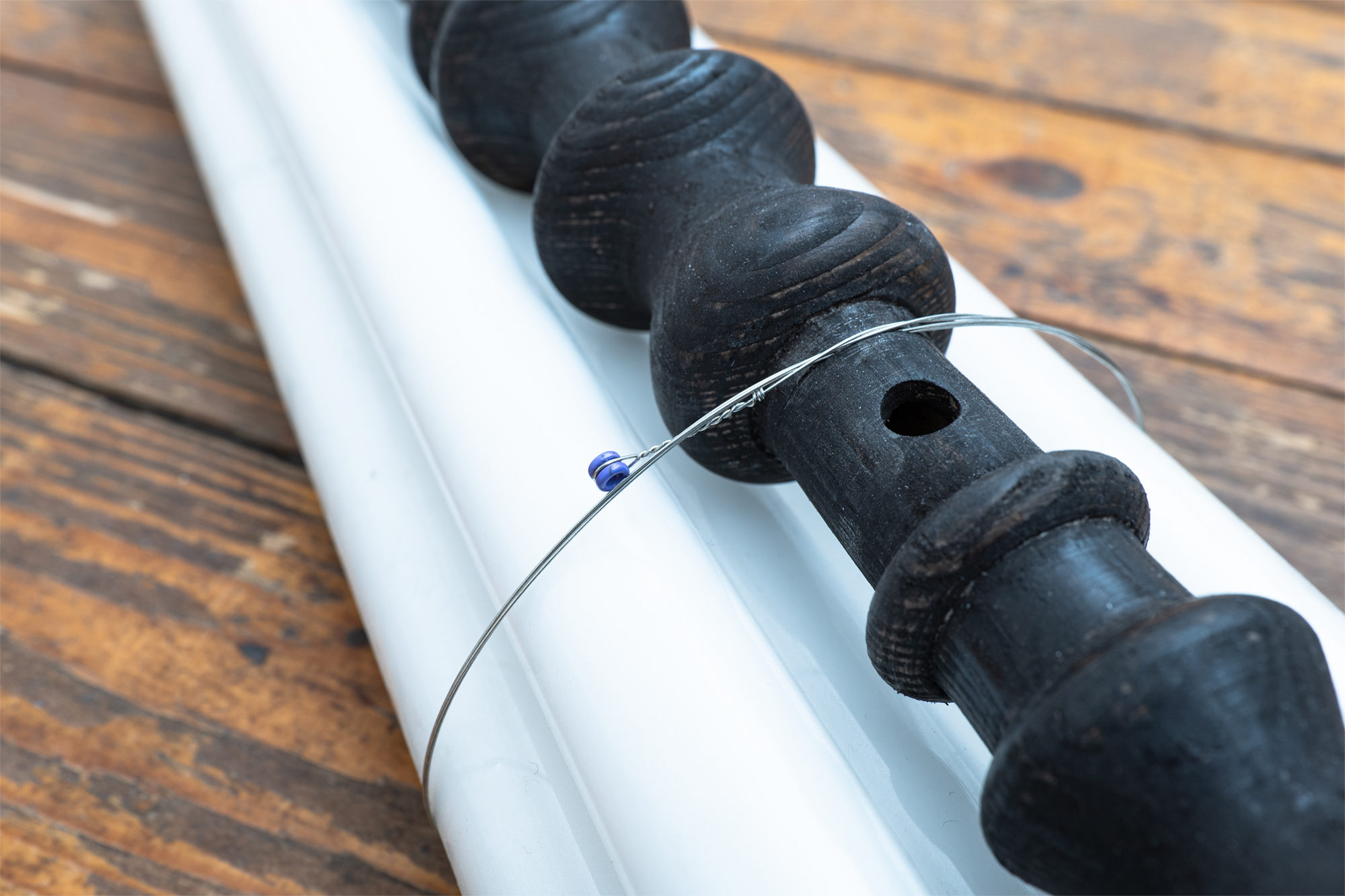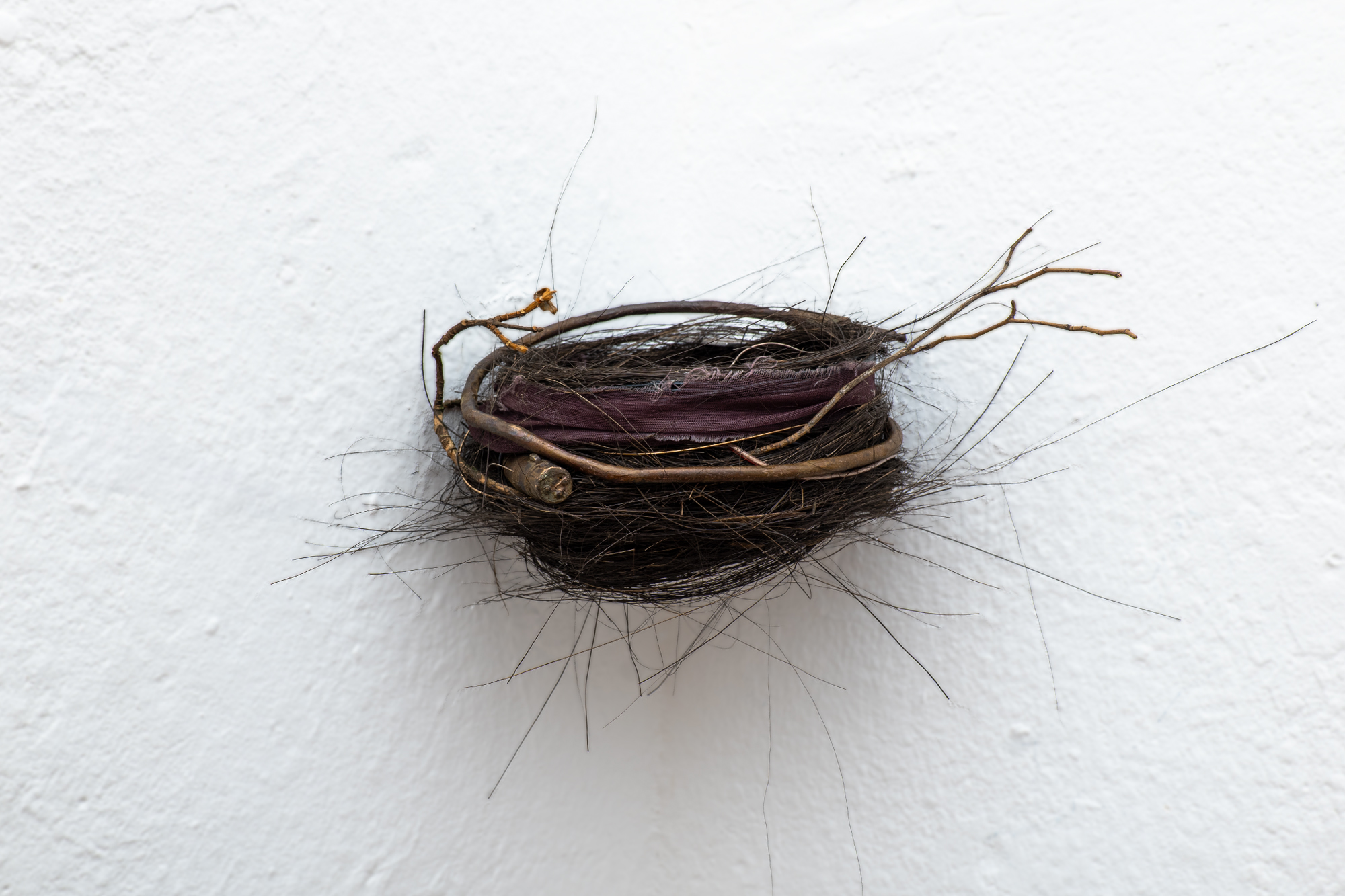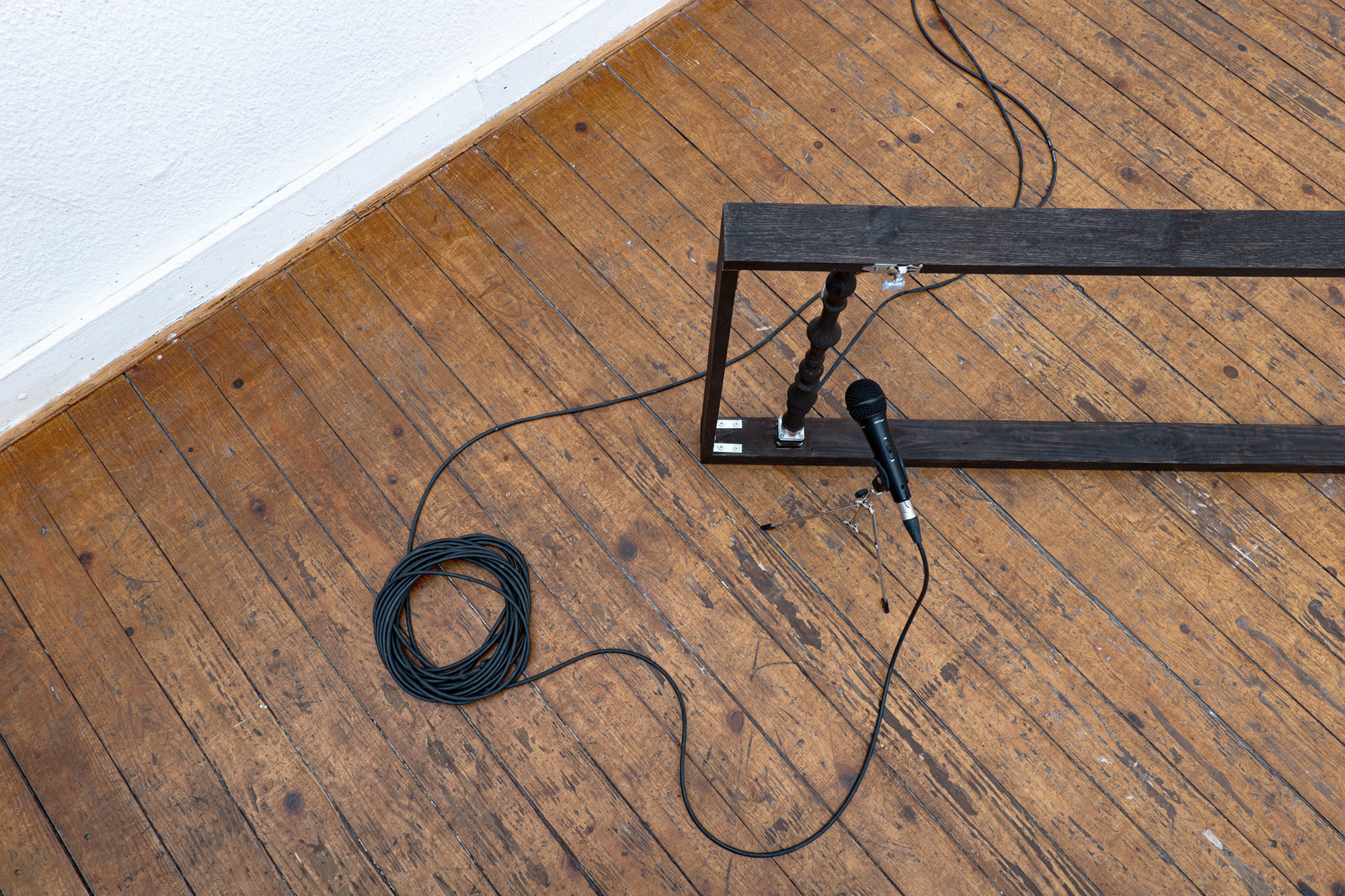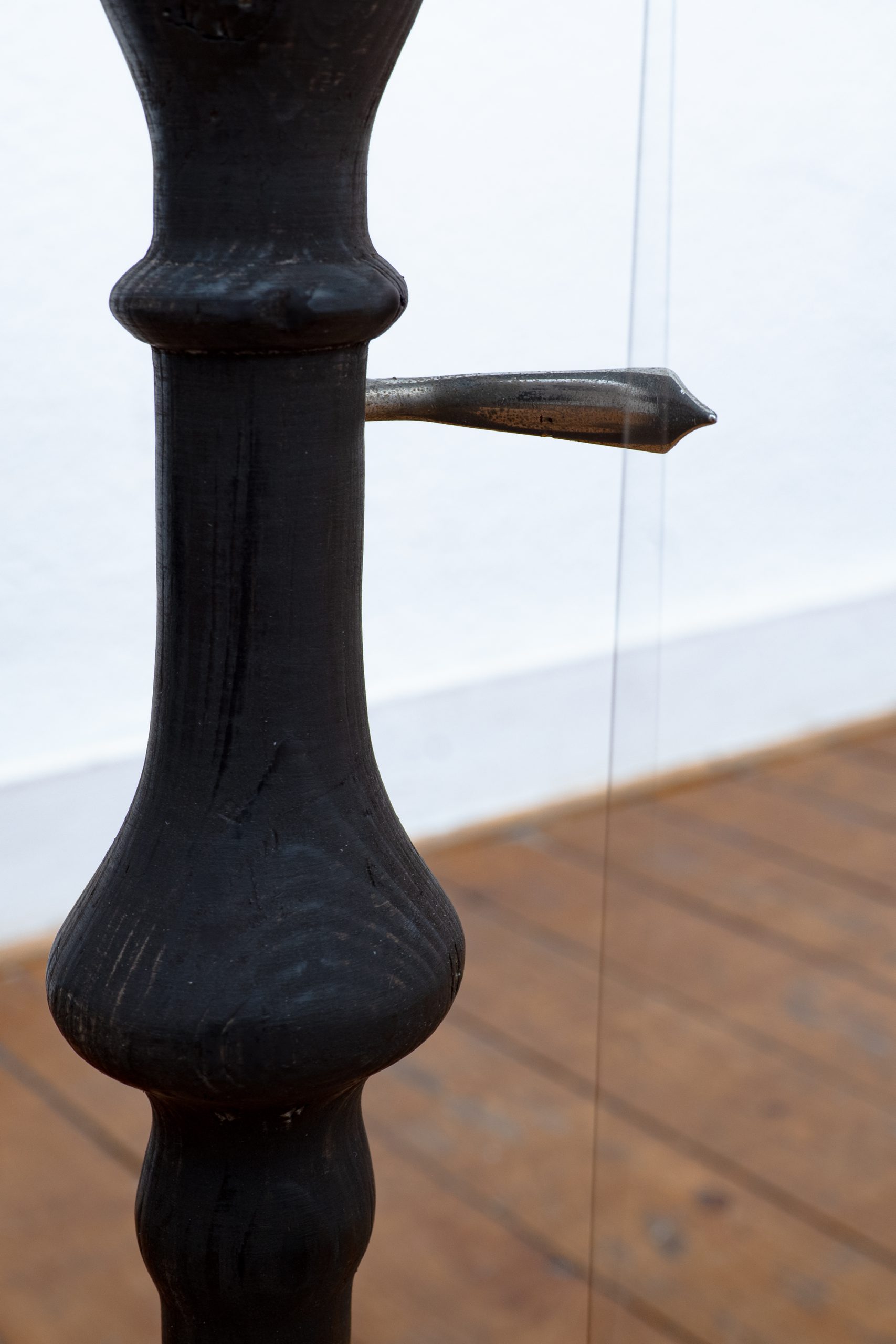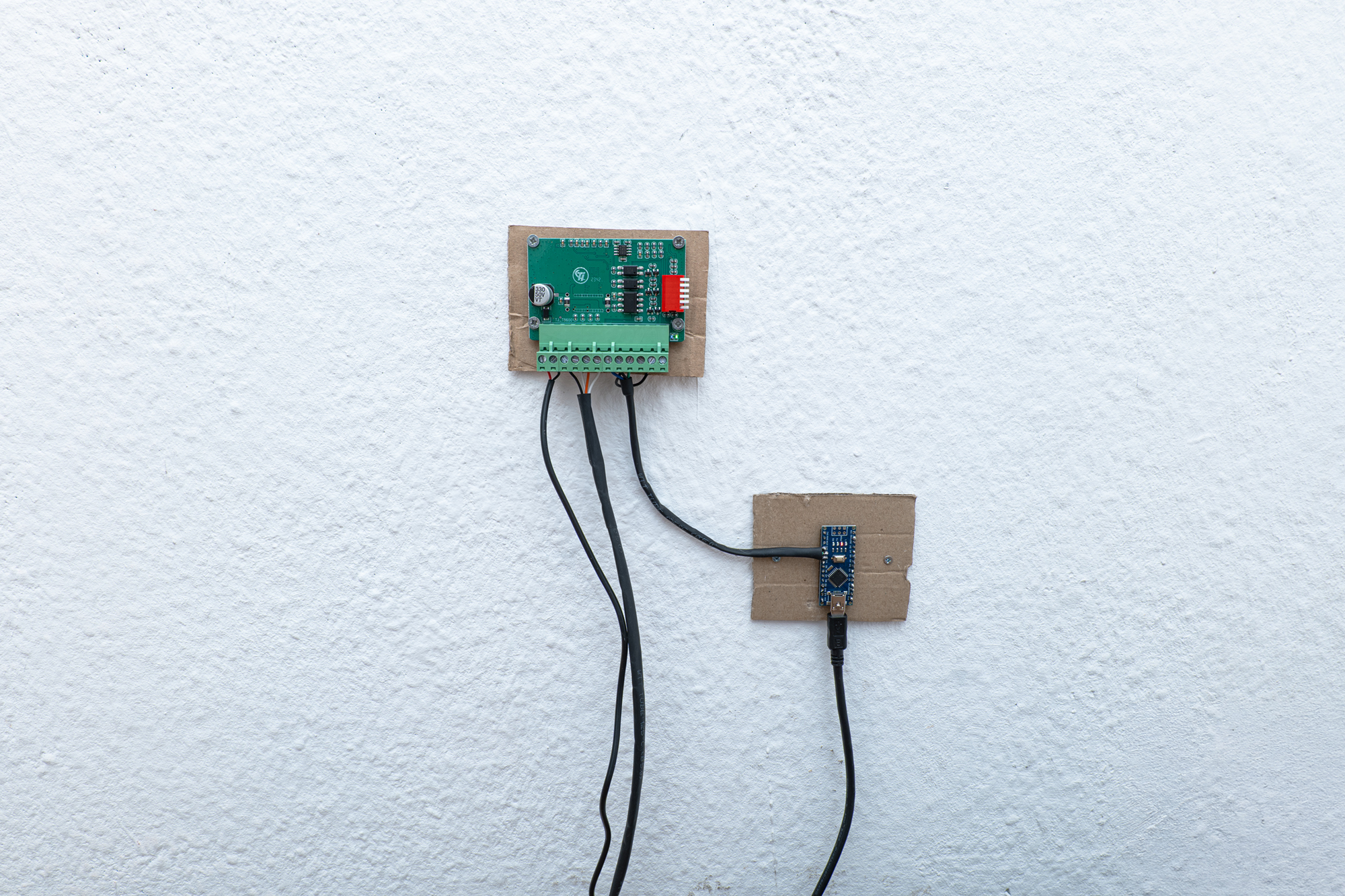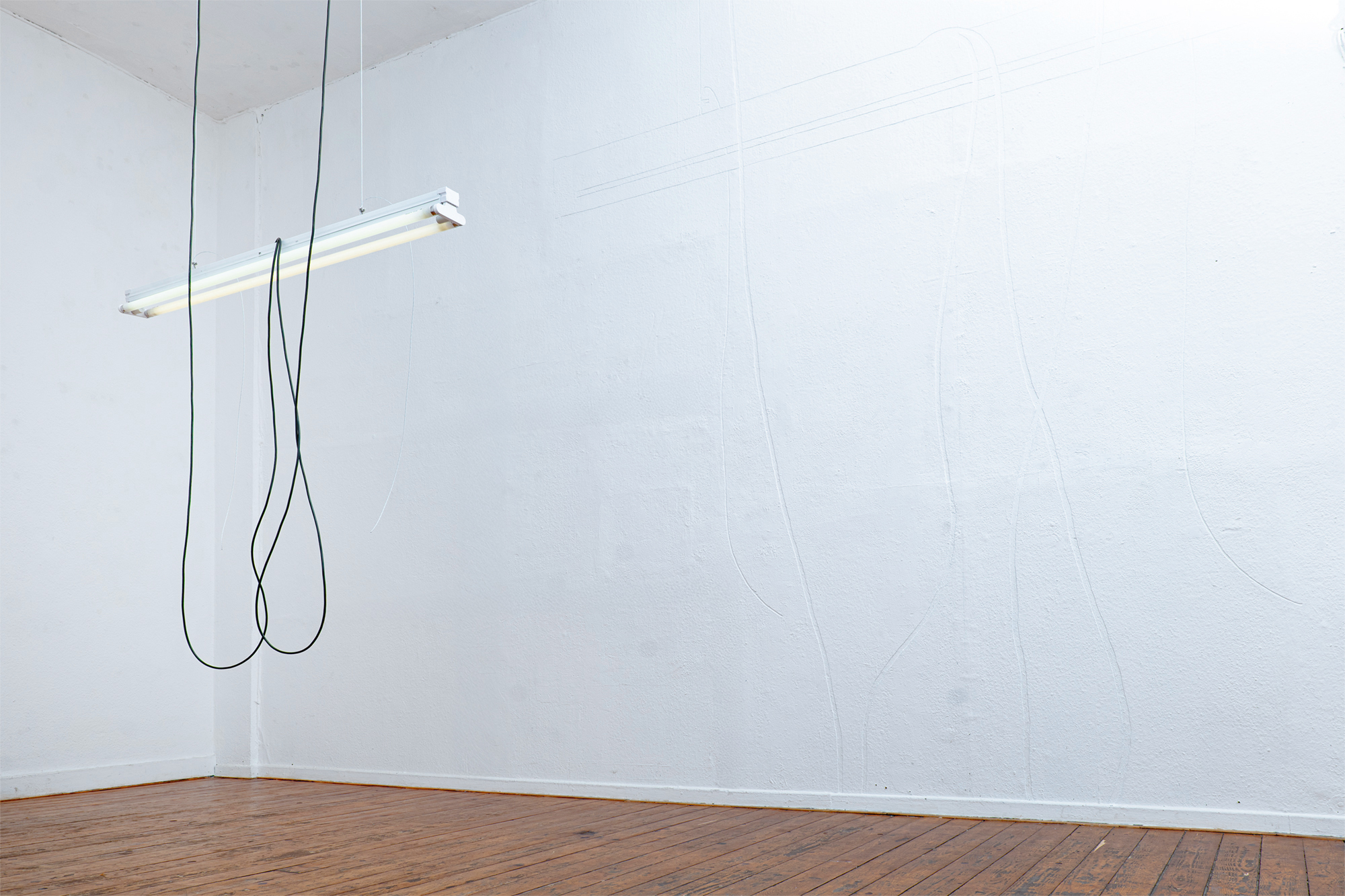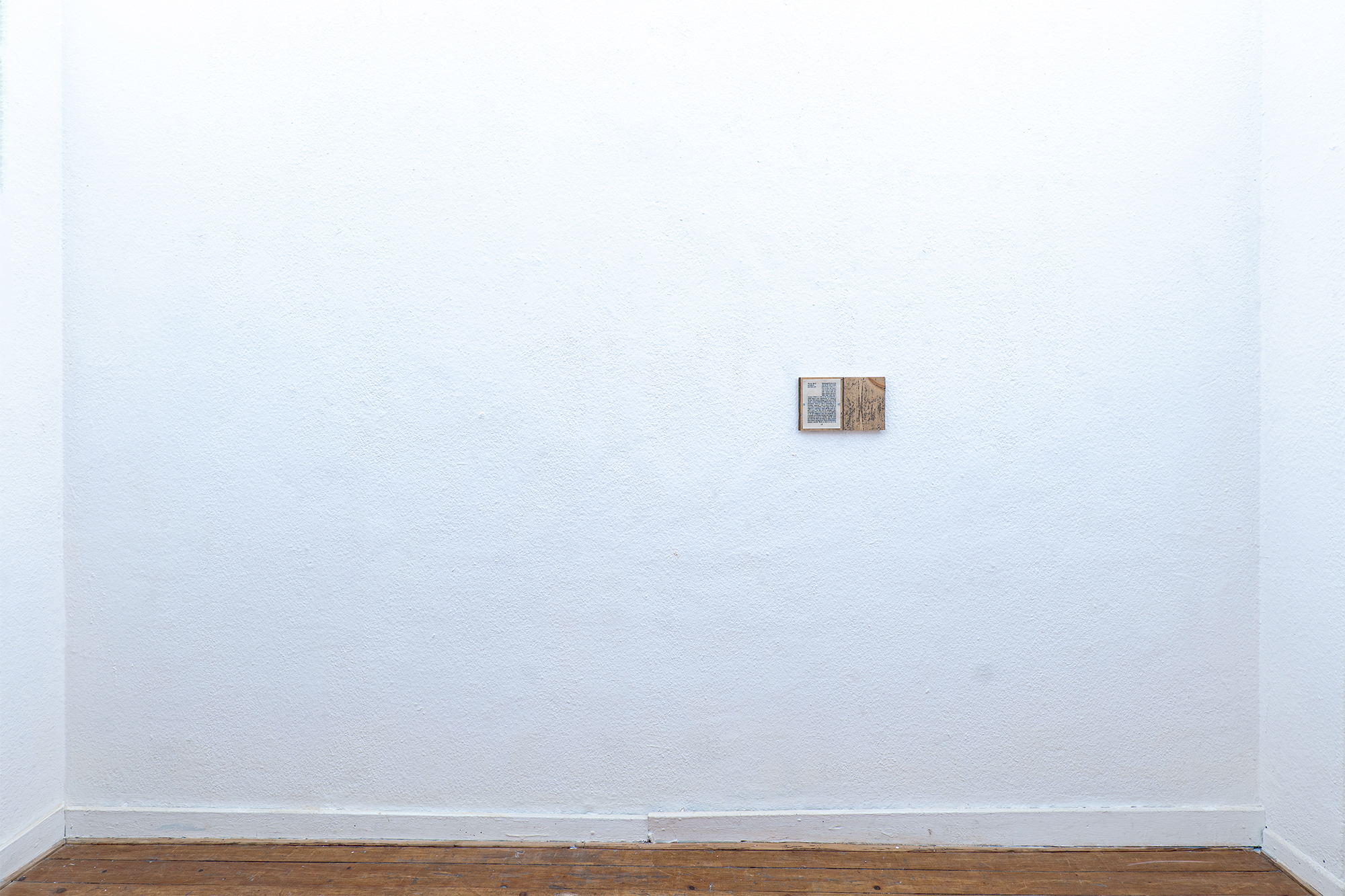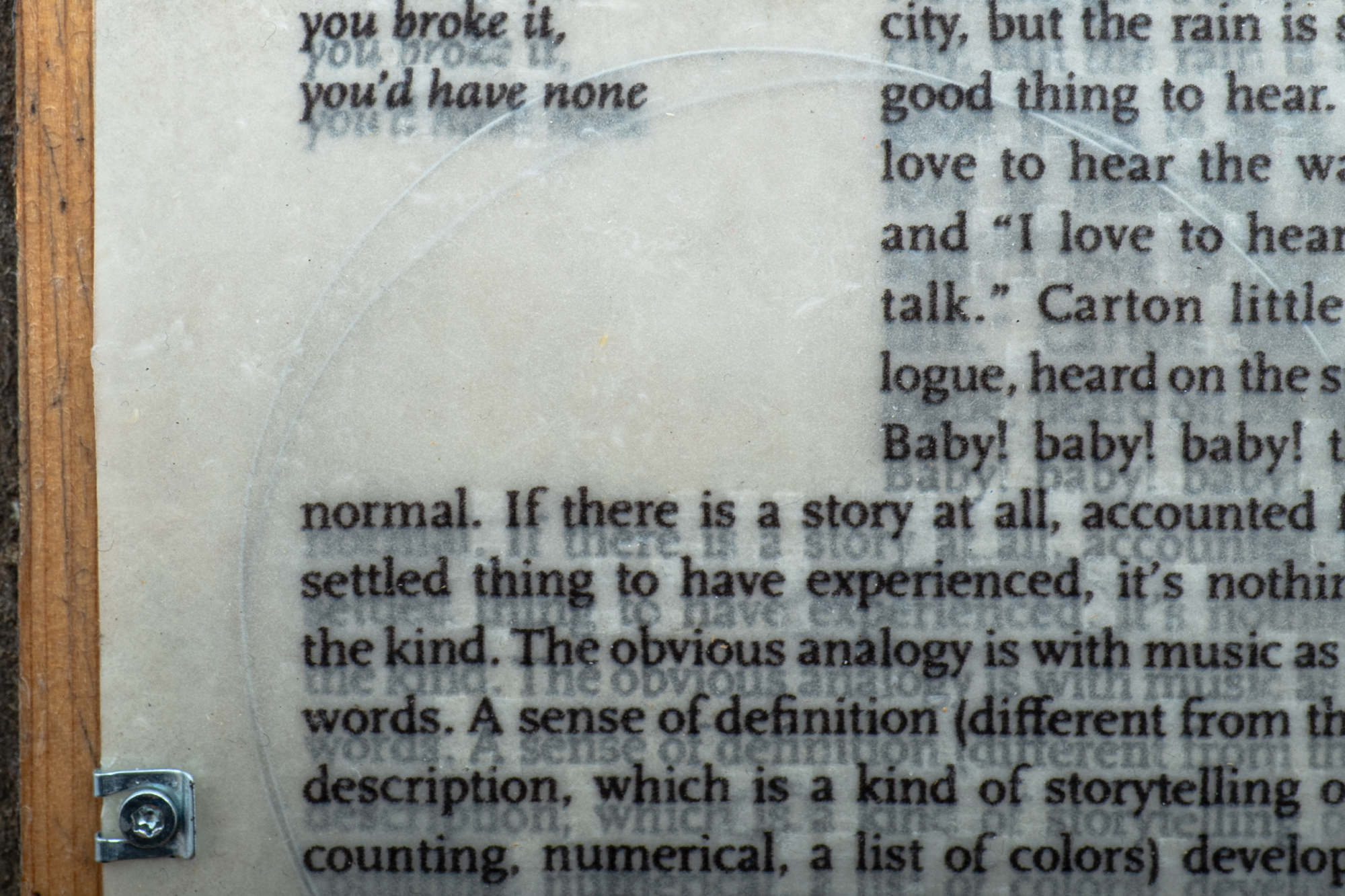Lilli Lake A motif in a fugue
March 9 – April 4, 2025
Venue
Moltkerei Werkstatt e.V.
Moltkestr. 8
50674 Cologne
Germany
Curated by Alexander Pütz
Special thanks to
George Popov, Wiebke Wesselmann, He You and all Volunteers
Design
George Popov
In her solo exhibition A motif in a fugue, Lilli Lake interweaves sound, object, and wall-based work into spatial-material and acoustic constellations.The starting point for the exhibition is the musical fugue – a polyphonic compositional form in which a central theme is introduced and developed across multiple voices. Historically, it has been shaped predominantly by male composers within an unequal system. Lake expands this form through techniques such as imitation and inversion, opening it up from a feminist perspective. Whereas the classical fugue is structured through the ordered recurrence and interweaving of themes, Lake is interested in a space of dissolution and permeability. The fugue becomes a metaphor for transcendence and transformation – one that extends beyond the musical realm.
A motif in a fugue enacts this through a constellation of sound, material, and space, in which repurposed wooden floorboards, instrument strings, and light modules interact:
Set in motion by a motor, the strings are struck, producing a layered soundscape. Light strips hang at varying heights from the ceiling, following a rhythmic arrangement. Turned wooden rods materialise traces of sound. Engraved words explore the linguistic dimension of the fugue. All components contribute to a shifting interplay between presence and absence.
Hejinian’s refrains function like a motif in a fugue – returning, shifting, and transforming within an open compositional structure.1
Inspired by writer Lyn Hejinian – whose texts are characterised by shifting, repetitive, and transformative motifs – Lilli Lake’s work embraces the idea of polyphony and transformation across spatial, sonic, and linguistic dimensions. Together, these elements create a mutable materiality that resists fixed structures and forms an open network of transformation. The exhibition takes the core principles of the musical fugue – recurrence, variation, and continual modulation – and translates them into a new spatial context.
1 Alan Shima, Similar to What it is Not: Lyn Hejinian’s My Life, p. 94-107.



